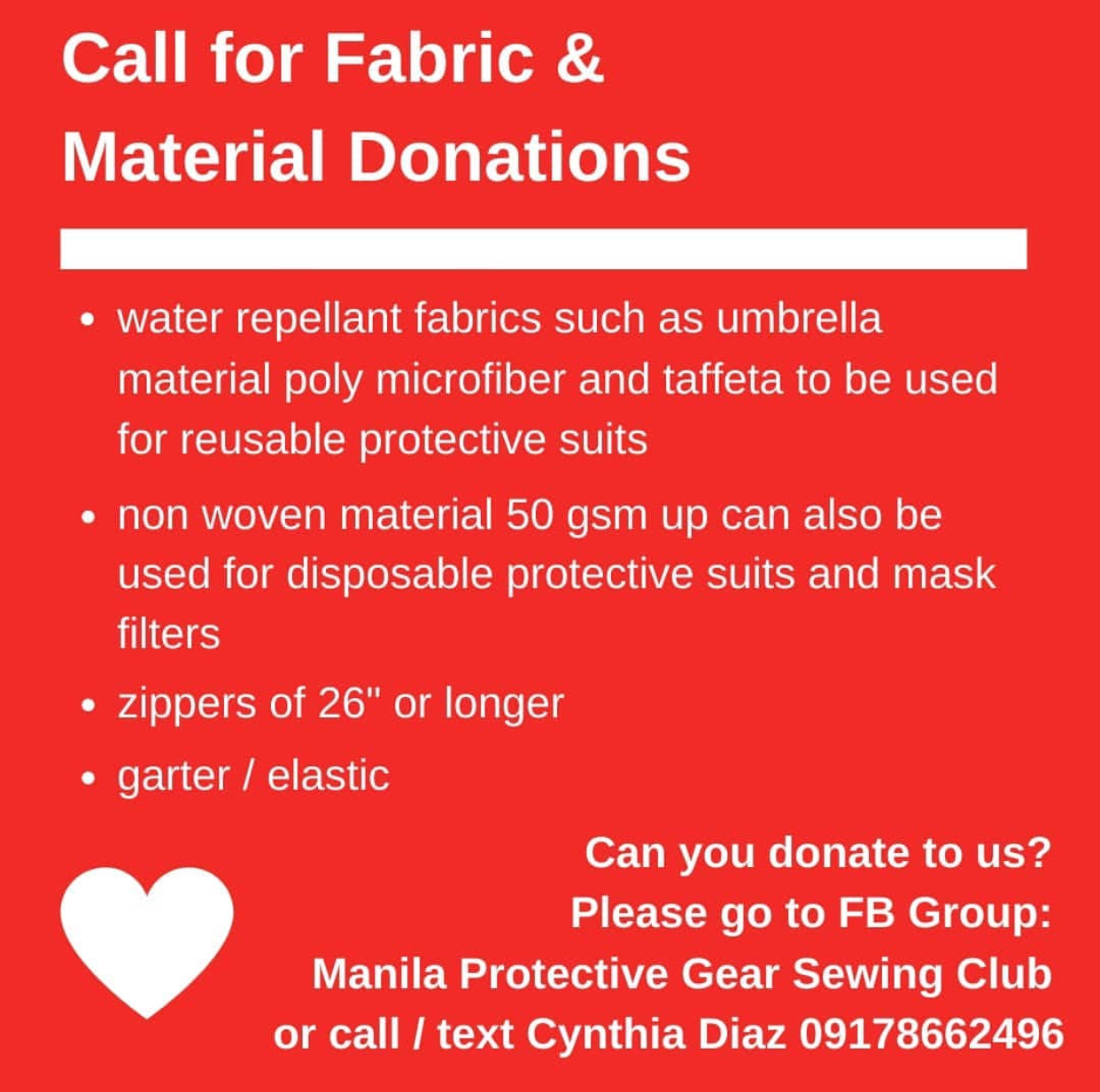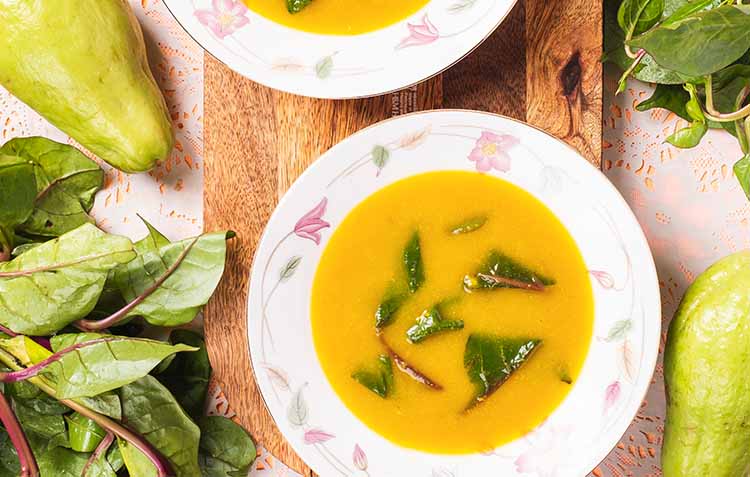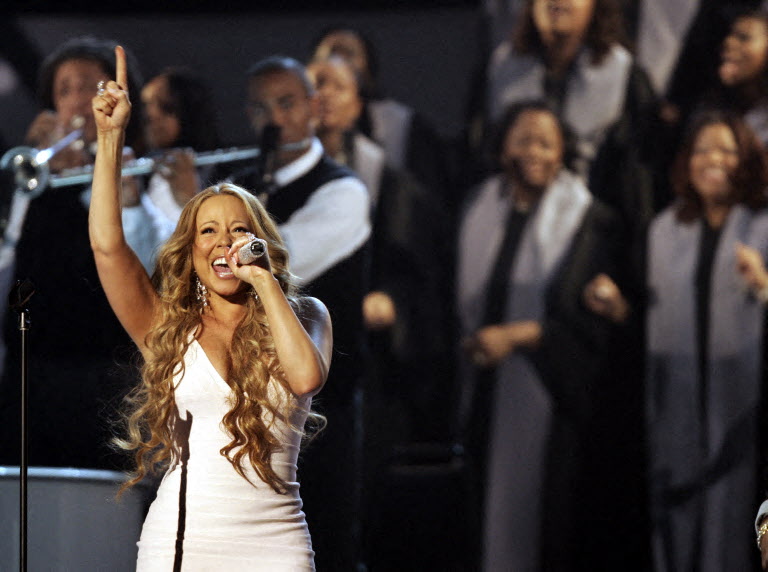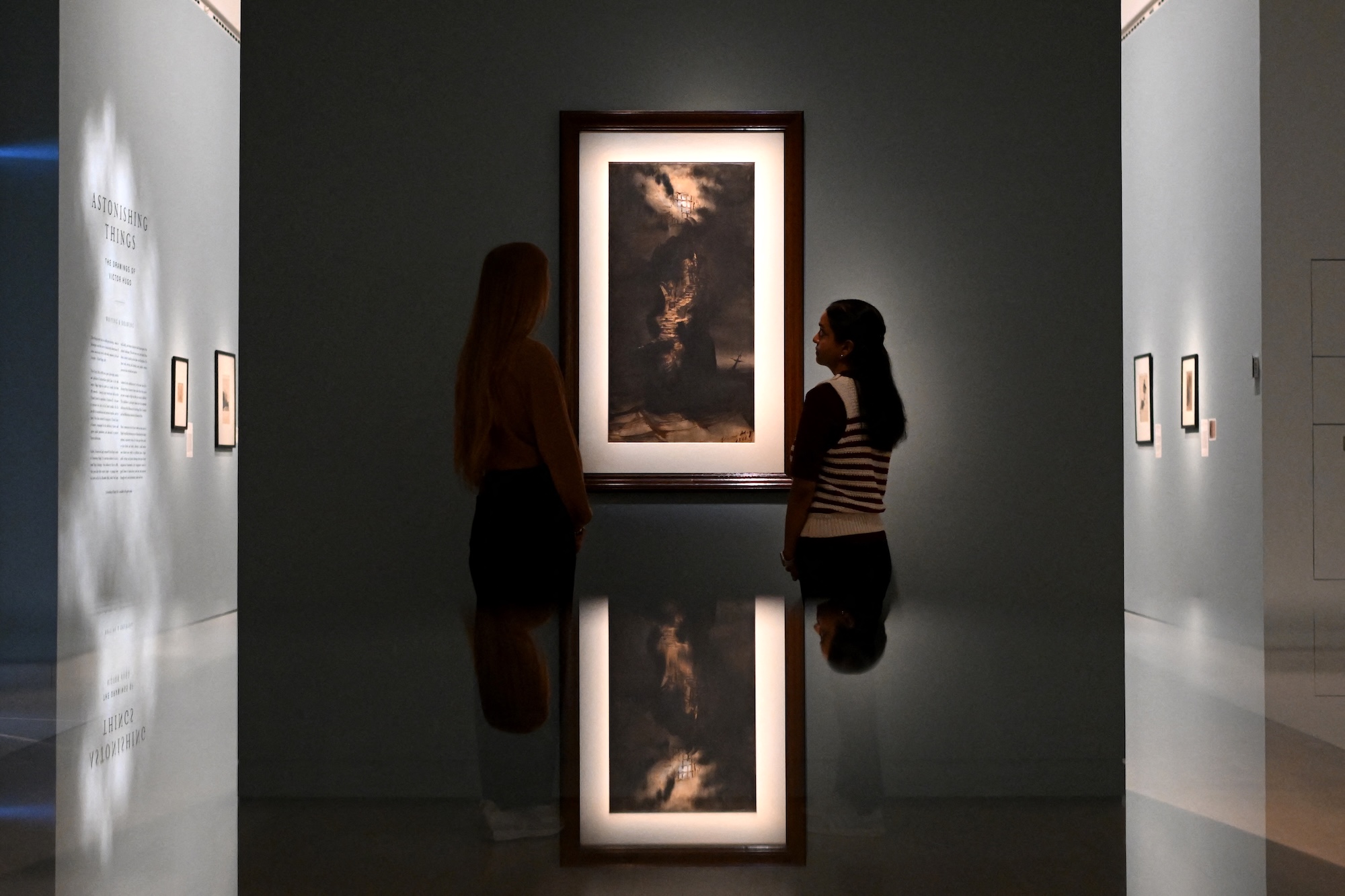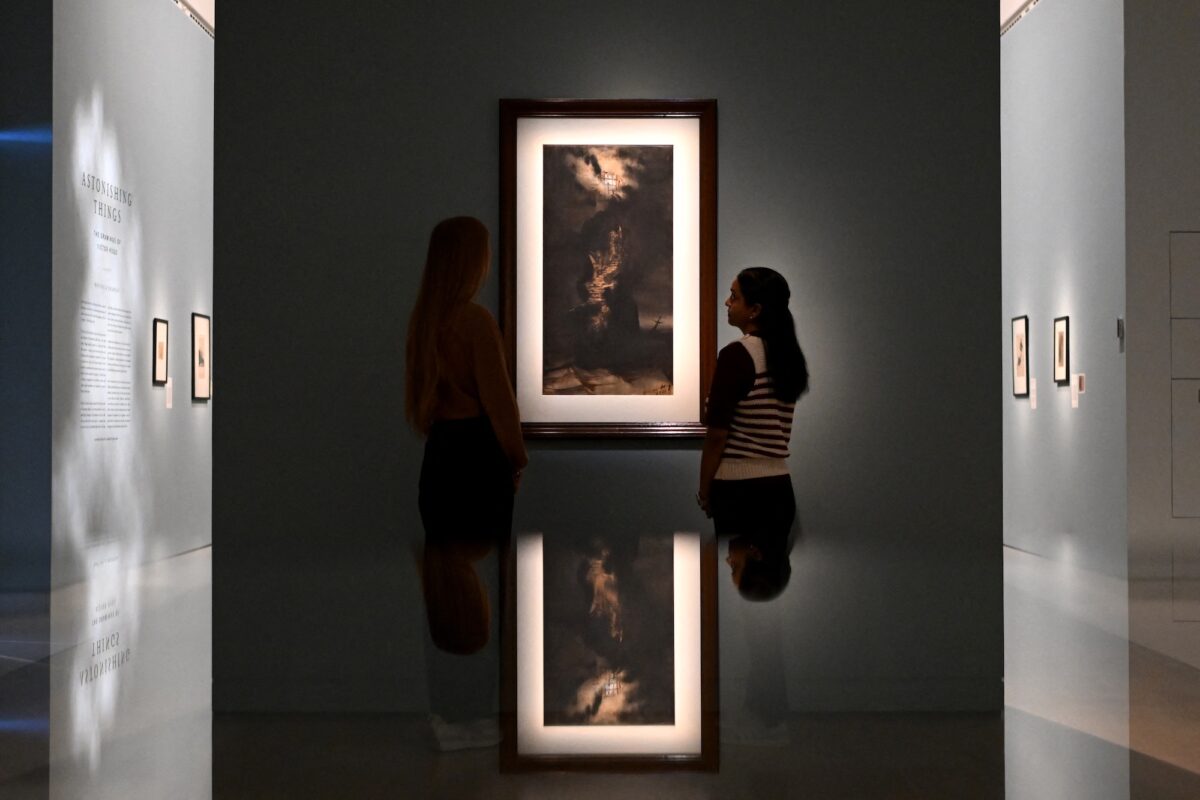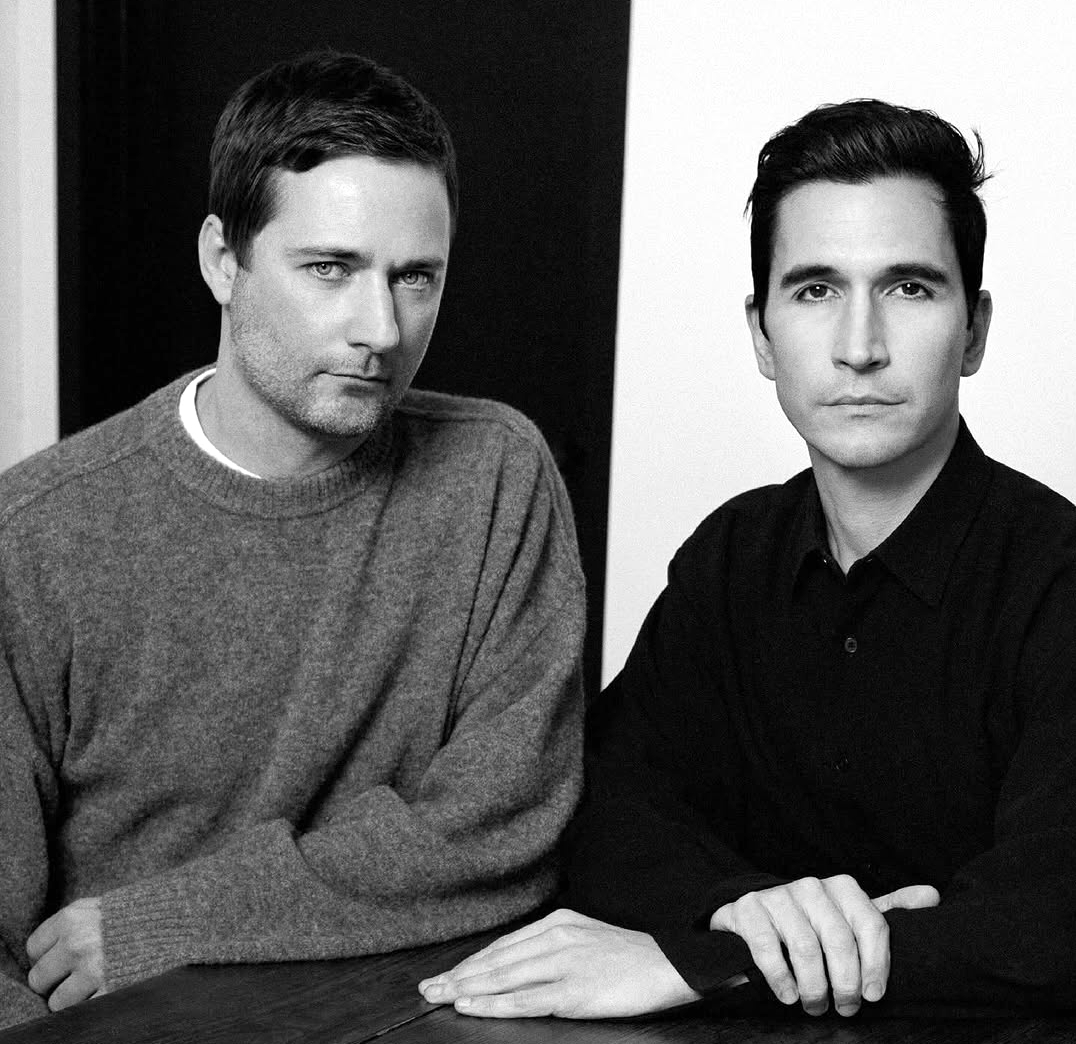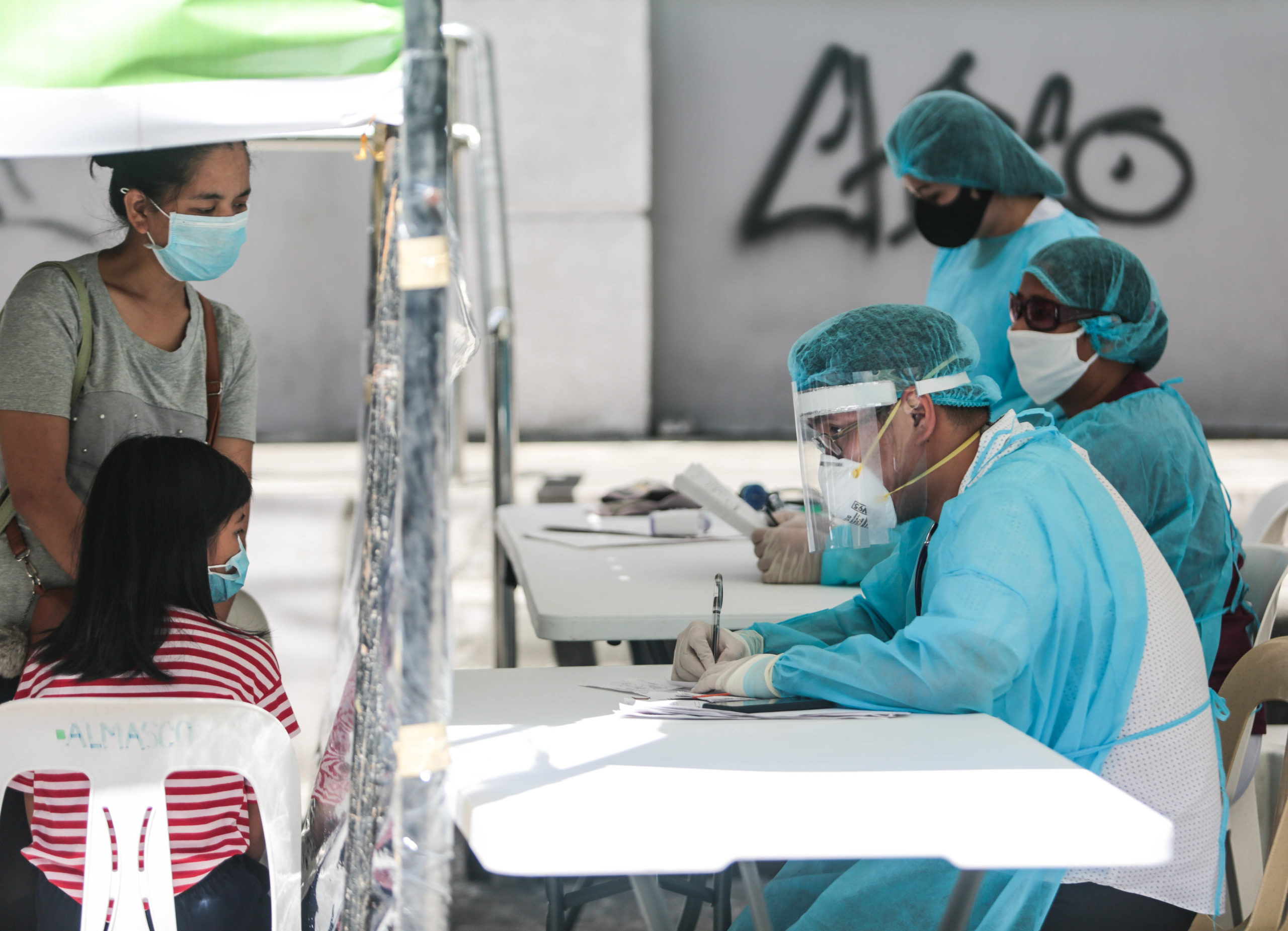
The fashion community is organizing its members to address the shortage of personal protective equipment (PPE), face masks and shoe covers for health-care workers and COVID-19 front-liners.
A group led by milliner Mich Dulce and friends has created the Facebook group Manila Protective Gear Sewing Club to call on colleagues in the fashion and garment industries to sew PPEs for distribution to hospital front-liners.
They’re also calling for donations from fabric retailers for nonwoven fabrics—a “minimum of 50 GSM,” or grams per square meter, or the fabrics used for eco bags, Dulce explained in her Facebook post—and waterproof fabrics such as taffeta and those used for umbrellas and raincoats.
They also need zippers 26” or longer as well as garters and elastics. (Donors may contact Cynthia Diaz at tel. 0917-8662496 or Facebook: Manila Protective Gear Sewing Club.) “While these are not medical-grade PPE, due to the shortage of PPEs, my doctor-friends said they’re better than nothing,” Dulce wrote.
Dulce’s group is coordinating with the office of Vice President Leni Robredo, which will provide them with the prototype PPEs from which the volunteers can make patterns. Robredo’s office will handle the distribution of the PPEs, wrote Dulce.
As of this writing, 700-plus volunteers have signed up with the group. Among those who have responded to Dulce’s call is Sandy Higgins, director of Slims Fashion and Arts School.
Higgins has tapped one of Slims’ recent graduates, Mario Santos, to lead their school’s volunteers.
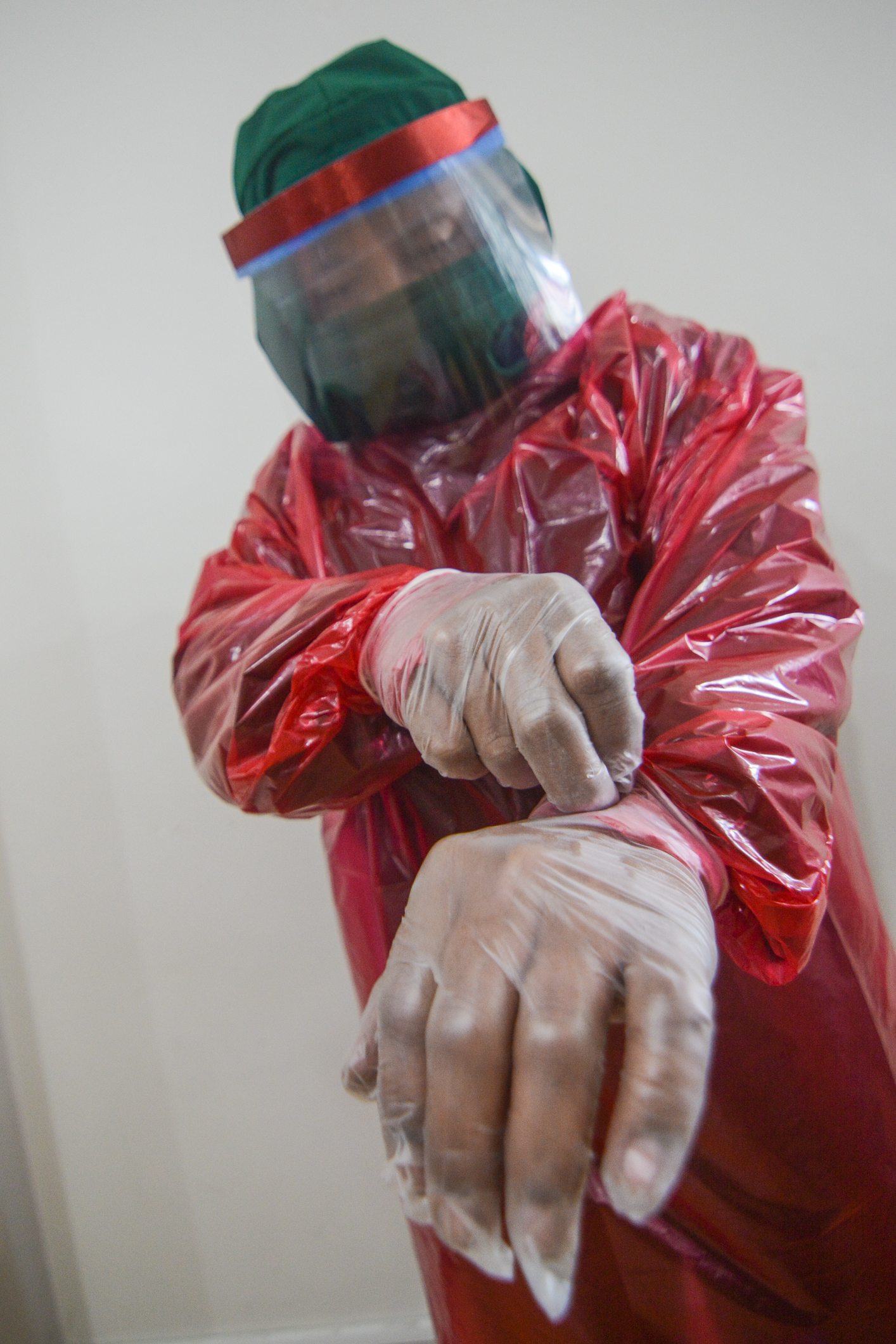
Willing to help
“It’s still in the very early stages,” Higgins told Lifestyle in a phone interview. “We’re still waiting for word from Mich’s group about the logistics. We’re also still waiting for the patterns and materials. I also spoke to someone from the office of the Vice President. They’re still doing groundwork and figuring out logistics and resources. But yes, we have many graduates who are quite willing to help and who have sewing machines at home. We’re here to help the situation with our skills.”
Higgins is also in talks with Gianna Montinola of Hands On Manila on how they could farm out the sewing of PPEs to each barangay, so the production and distribution is localized.
Another designer, Happy Andrada, has set up a shopping site (www.shophappyandrada.bigcartel.com) where 100-percent of proceeds from sales of her designs will go to the purchase of PPEs for front-liners.
Private groups and individuals all over the country have been organizing to create PPEs for the front-liners in their local communities.
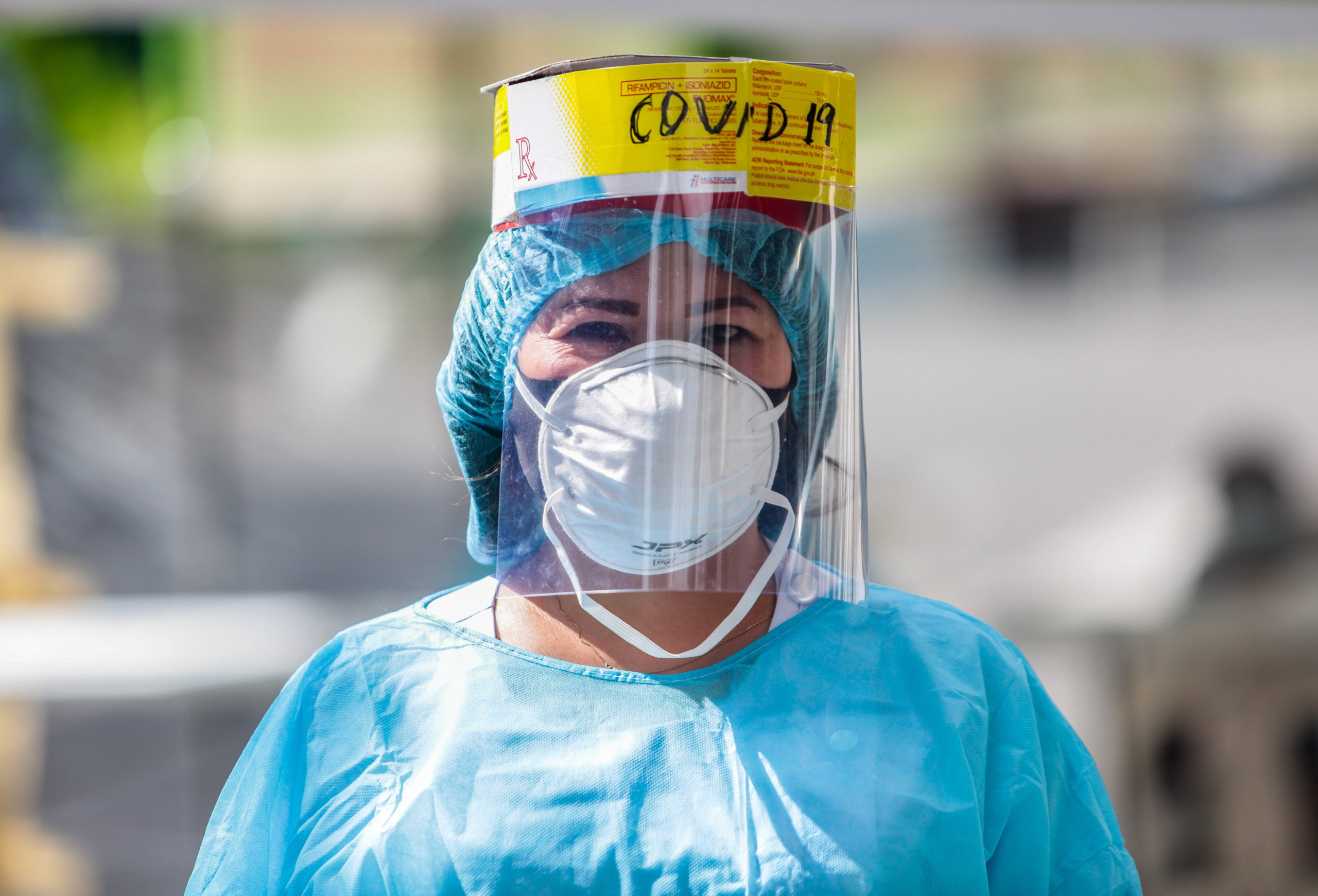
At the University of the Philippines Cebu’s FabLab, faculty and staff have designed and started 3D-printing frames for PPE face shields. The group is counting on donors to finance their efforts.
Some moms from Xavier School in San Juan City have also started making DIY face shields, using only clear acetate, foam and elastic garter, for health-care volunteers.
There are social media posts of health-care workers improvising their own PPEs with available materials, like recycled plastic bottle containers, while a Facebook group called 3D Printing for a Cause PH has been printing frames for face shields.
These are all laudable acts by Good Samaritans. However, the World Health Organization (WHO) warned Tuesday that DIY facemasks and PPEs don’t guarantee 100-percent protection.
But still, “any protection will be better than no protection,” WHO’s Rabindra Abiyasinghe was quoted as saying in news reports.
